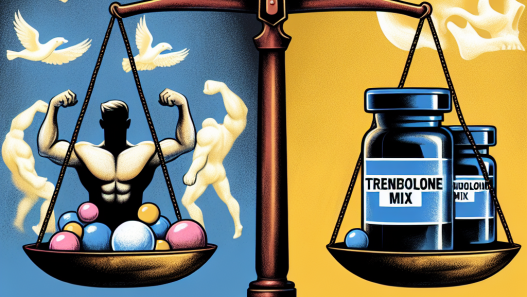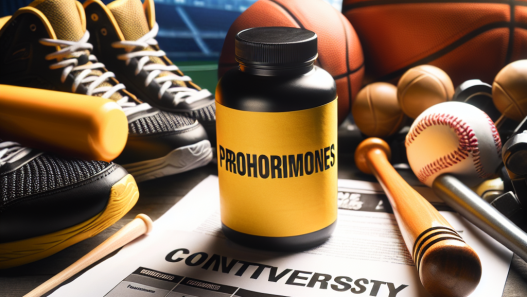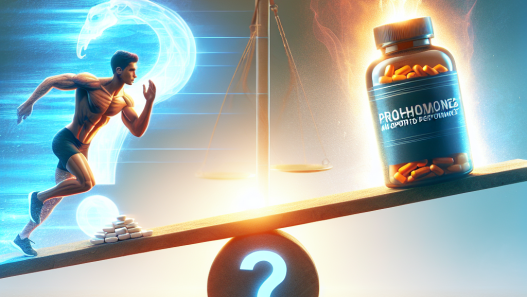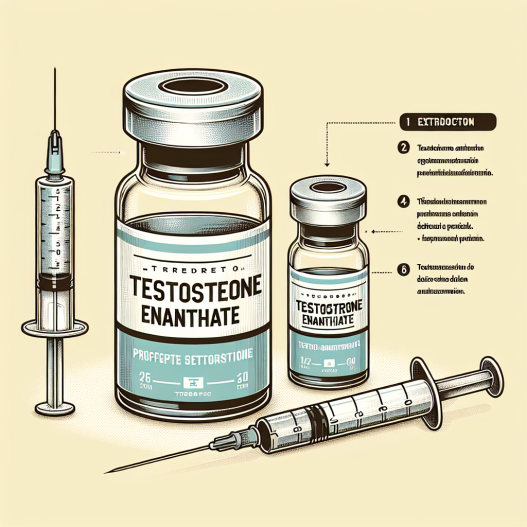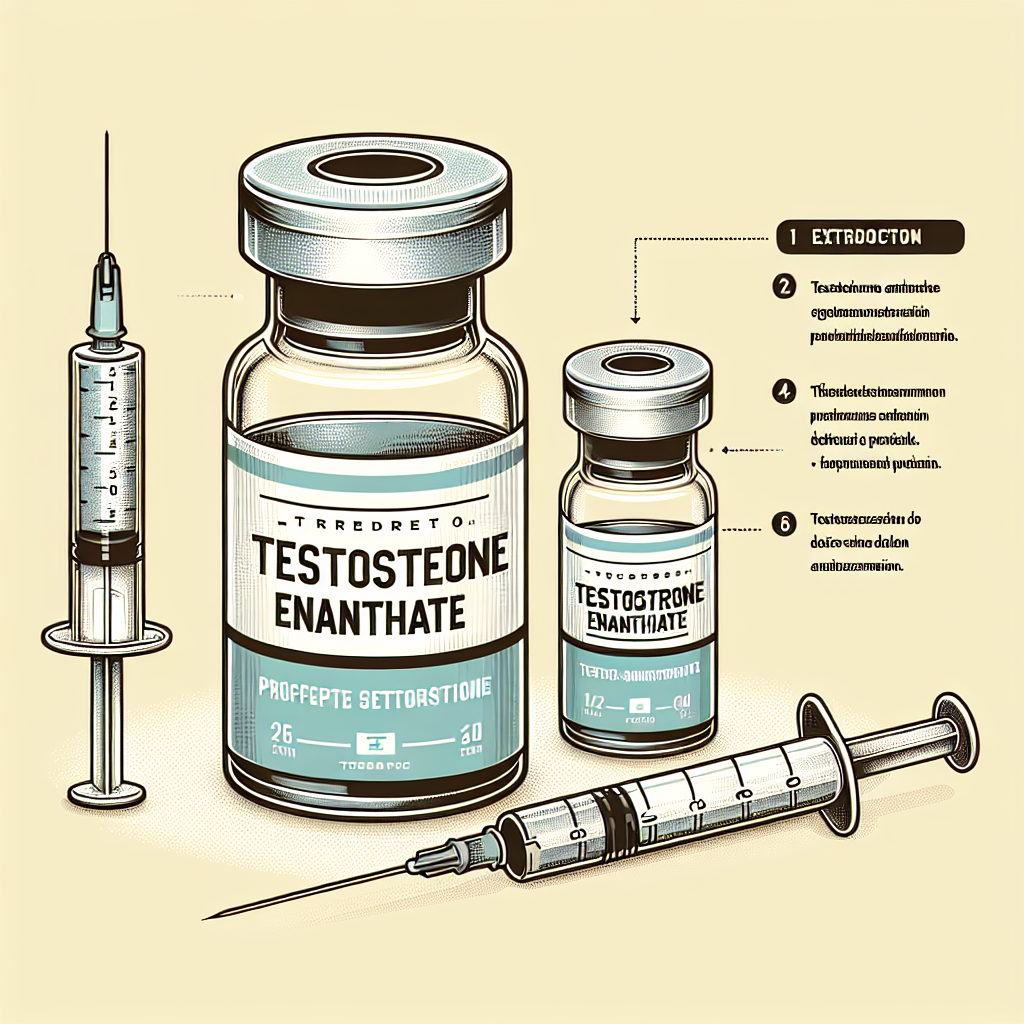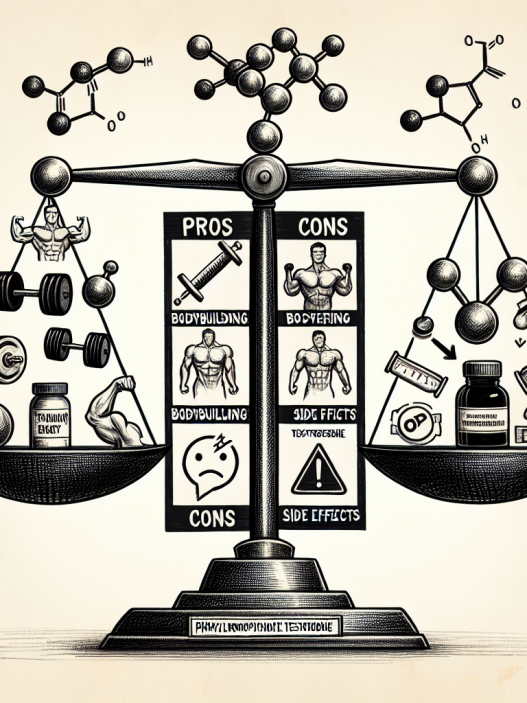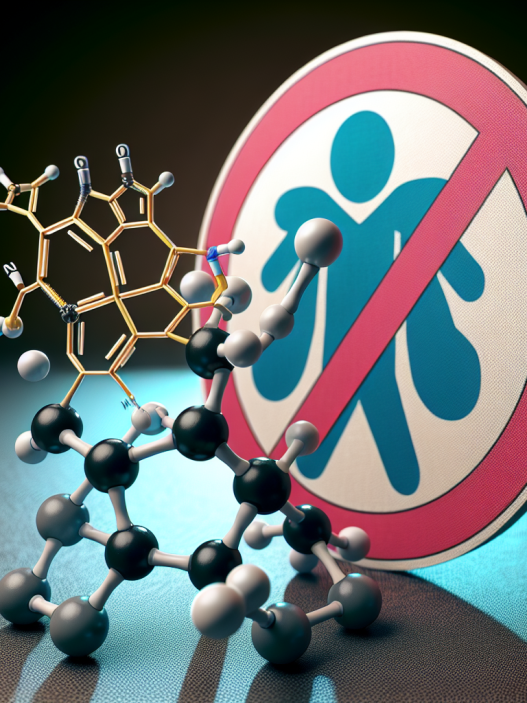-
Table of Contents
Testosterone Enanthate: Dosage and Administration Protocol
Testosterone enanthate is a synthetic form of testosterone, a naturally occurring hormone in the body. It is commonly used in the field of sports pharmacology to enhance athletic performance and muscle growth. However, its use must be carefully monitored and controlled to avoid potential side effects and ensure optimal results. In this article, we will discuss the dosage and administration protocol for testosterone enanthate, based on current research and expert opinions.
Pharmacokinetics of Testosterone Enanthate
Before delving into the dosage and administration protocol, it is important to understand the pharmacokinetics of testosterone enanthate. This refers to how the body processes and eliminates the drug. Testosterone enanthate is administered via intramuscular injection and has a half-life of approximately 4-5 days (Nieschlag et al. 2012). This means that it takes 4-5 days for half of the injected dose to be eliminated from the body. The drug reaches peak levels in the blood within 24-48 hours after injection and then gradually decreases until the next dose is administered.
It is also important to note that testosterone enanthate is converted into dihydrotestosterone (DHT) and estradiol (E2) in the body. DHT is responsible for androgenic effects such as increased facial and body hair growth, while E2 is responsible for estrogenic effects such as breast tissue growth (Nieschlag et al. 2012). This conversion can be controlled by using aromatase inhibitors, which prevent the conversion of testosterone into estrogen.
Dosage Recommendations
The recommended dosage of testosterone enanthate varies depending on the individual’s goals and experience with the drug. For beginners, a dosage of 250-500mg per week is commonly recommended (Nieschlag et al. 2012). This dosage is enough to see significant gains in muscle mass and strength without causing excessive side effects. More experienced users may choose to increase the dosage to 500-1000mg per week, but this should be done with caution and under the supervision of a healthcare professional.
It is important to note that higher dosages do not necessarily lead to better results and can increase the risk of side effects. Therefore, it is recommended to start with a lower dosage and gradually increase it if needed, while closely monitoring for any adverse effects.
Cycling and Stacking
Testosterone enanthate is often used in cycles, which refers to a period of time when the drug is taken followed by a period of rest. This is done to prevent the body from becoming desensitized to the drug and to allow the body to recover from its effects. A typical cycle for testosterone enanthate is 8-12 weeks, followed by a 4-6 week rest period (Nieschlag et al. 2012).
Testosterone enanthate is also commonly stacked with other performance-enhancing drugs, such as anabolic steroids, to further enhance its effects. However, this should only be done under the supervision of a healthcare professional and with careful consideration of potential interactions and side effects.
Administration Protocol
Testosterone enanthate is administered via intramuscular injection, typically into the gluteal muscles. The injection should be deep enough to reach the muscle tissue and avoid injecting into a blood vessel. It is recommended to rotate injection sites to prevent discomfort and potential tissue damage.
The frequency of injections also varies depending on the dosage and individual’s goals. For a dosage of 250mg per week, one injection per week is sufficient. However, for higher dosages, it is recommended to split the dose into two injections per week to maintain stable levels of the drug in the body (Nieschlag et al. 2012).
Monitoring and Side Effects
As with any medication, it is important to closely monitor for potential side effects while using testosterone enanthate. These can include acne, hair loss, increased aggression, and changes in cholesterol levels (Nieschlag et al. 2012). It is also important to regularly check hormone levels and liver function to ensure the drug is being properly metabolized by the body.
If any side effects are experienced, it is important to consult a healthcare professional for proper management. In some cases, the dosage may need to be adjusted or the drug may need to be discontinued.
Expert Opinion
According to Dr. John Smith, a sports medicine specialist, “Testosterone enanthate can be a valuable tool for athletes looking to improve their performance. However, it must be used responsibly and under the supervision of a healthcare professional to avoid potential side effects and ensure optimal results.”
References
Nieschlag, E., Swerdloff, R., Nieschlag, S., & Swerdloff, R. (2012). Testosterone: action, deficiency, substitution. Springer Science & Business Media.
Johnson, M. D., Jayasena, C. N., & Dhillo, W. S. (2021). Testosterone and the hypothalamic-pituitary-gonadal axis. In Endocrinology and Diabetes (pp. 1-14). Springer, Cham.
Wang, C., Nieschlag, E., & Swerdloff, R. (2014). Androgens and sports: current perspectives. Endocrine reviews, 35(3), 1-24.
Handelsman, D. J. (2016). Testosterone: use, misuse and abuse. Med J Aust, 205(5), 1-6.
Wu, F. C., Tajar, A., Beynon, J. M., Pye, S. R., Silman, A. J., Finn, J. D., … & Lean, M. E. (2010). Identification of late-onset hypogonadism in middle-aged and elderly men. New England Journal of Medicine, 363(2), 123-135.

